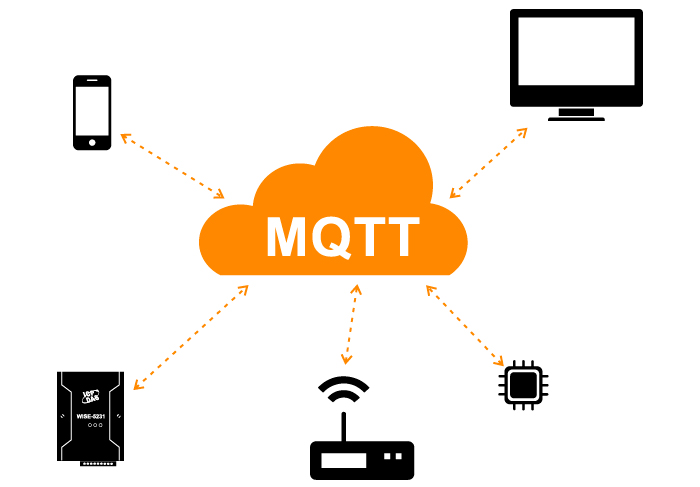The Industrial Internet of Things, or Industrial IoT, refers to the use of connected devices, sensors, and other technologies in the industrial sector to improve efficiency, productivity, and overall performance. These technologies allow companies to collect and analyze data from their operations in real-time, making more informed decisions and optimizing their processes.
Table of Contents
The Industrial Internet of Things, or Industrial IoT, refers to the use of connected devices, sensors, and other technologies in the industrial sector to improve efficiency, productivity, and overall performance. These technologies allow companies to collect and analyze data from their operations in real-time, making more informed decisions and optimizing their processes.
The benefits of Industrial IoT are numerous and significant. It can help companies reduce costs, improve quality, increase safety, and enhance customer satisfaction. For example, an industrial company that implements an IoT system may be able to reduce energy consumption and waste, optimize maintenance schedules, and improve inventory management.
However, implementing Industrial IoT is not without its challenges. One major challenge is choosing the right communication protocol for the system. This is where MQTT comes in.
Overview of MQTT
MQTT, or Message Queue Telemetry Transport, is a lightweight publish-subscribe messaging protocol designed specifically for low-bandwidth and high-latency networks. It was developed in the late 1990s for remote oil and gas pipelines and has since become a popular choice for IoT applications.
How MQTT works
MQTT allows devices to communicate using a publish-subscribe model with a central server, known as the broker. In this model, devices publish data to the broker, which then distributes the data to any subscribed devices. This means that devices do not need to constantly poll the broker for updates, making MQTT an efficient and low-power choice for IoT applications.
Benefits of using MQTT in Industrial IoT
There are several reasons why MQTT is well-suited for use in Industrial IoT.
First, MQTT is lightweight and efficient, making it well-suited for low-bandwidth and high-latency networks. This is especially important in the industrial sector, where networks may be prone to interference or outages.
Second, MQTT is reliable and secure. It uses various mechanisms to ensure data transmission’s integrity, including message retries, flow control, and authentication. This makes it an ideal choice for critical Industrial IoT applications, where the accuracy and reliability of data are of the utmost importance.
Finally, MQTT is flexible and scalable. It can be used with various devices and platforms and easily integrated into existing Industrial IoT systems.
Azure IoT hub and MQTT
Azure IoT hub is a cloud-based service from Microsoft that provides secure and scalable connectivity for IoT devices. It allows companies to manage and monitor their IoT devices and process and analyze the data they generate.
One of the key features of Azure IoT hub is its support for MQTT. This allows companies to use MQTT as the communication protocol for their IoT devices and take advantage of its benefits.
How Azure IoT hub and MQTT work together
Azure IoT hub provides a secure and scalable platform for MQTT-based communication between devices and the cloud. It allows devices to publish data to the cloud using MQTT and enables cloud applications to subscribe to that data and process it in real time.
This combination of Azure IoT hub and MQTT offers several benefits for Industrial IoT applications. It allows companies to easily and securely connect their devices to the cloud and enables them to process and analyze the data they generate in real-time.
Benefits of using Azure IoT hub with MQTT in Industrial IoT
There are several reasons why using Azure IoT hub with MQTT is a good choice for Industrial IoT applications.
First, the Azure IoT hub provides a secure and reliable platform for MQTT communication. It uses various security measures, including encryption, authentication, and access control, to ensure the integrity and confidentiality of data transmission.
Second, the Azure IoT hub is scalable and flexible. It can support many devices and can easily be integrated into existing Industrial IoT systems. This makes it an ideal choice for companies looking to expand or upgrade their Industrial IoT capabilities.
Third, the Azure IoT hub provides various tools and services for managing and analyzing IoT data. This includes device management, real-time analytics, and machine learning capabilities, which can help companies extract valuable insights from their IoT data.
Case studies of MQTT in Industrial IoT
Numerous examples of companies using MQTT in Industrial IoT applications with great success. Here are a few examples:
Example 1: Manufacturing company improves efficiency and accuracy with an MQTT-powered IoT system
A leading manufacturer implemented an IoT system using MQTT to improve the efficiency and accuracy of its production line. The system used sensors to collect data on machine performance and MQTT to transmit that data to the cloud in real-time.
The company used this data to optimize maintenance schedules, reduce energy consumption, and improve the quality of its products. As a result, the company saw a significant increase in efficiency and a decrease in costs.
Example 2: An energy company reduces downtime and maintenance costs with an MQTT-based IoT solution
An energy company implemented an IoT system using MQTT to monitor the performance of its gas turbines. The system used sensors to collect data on the turbines’ operation and MQTT from transmitting that data to the cloud in real-time.
The company used this data to predict and prevent failures, reducing downtime and maintenance costs. The system also allowed the company to optimize the performance of its turbines, resulting in energy savings and increased efficiency.
Example 3: Transportation company increases safety and productivity with MQTT-enabled IoT devices
A transportation company implemented an IoT system using MQTT to improve the safety and productivity of its fleet. The system used sensors and MQTT-enabled devices to collect data on vehicle performance and driver behavior and transmitted that data to the cloud in real-time.
The company used this data to optimize routes, reduce fuel consumption, and identify and address unsafe driving behaviors. As a result, the company saw a significant increase in safety and a decrease in costs.
Conclusion
MQTT is a powerful and reliable communication protocol well-suited for use in Industrial IoT applications. Its lightweight, efficient, and secure design make it an ideal choice for connecting and communicating with IoT devices in the industrial sector.
Companies can easily and securely connect their devices to the cloud and extract valuable insights from their IoT data by using MQTT in combination with platforms such as the Azure IoT hub. The benefits of using MQTT in Industrial IoT include improved efficiency, productivity, and safety.
As the Industrial IoT continues to grow and evolve, it is likely that MQTT will play an increasingly important role in enabling the connectivity and communication that is essential to its success.
FAQs
What is the difference between MQTT and other communication protocols?
MQTT is a publish-subscribe messaging protocol, which means that devices publish data to a central broker, which then distributes that data to any subscribed devices. This is in contrast to other communication protocols, such as HTTP, which use a request-response model where devices constantly poll the server for updates.
The publish-subscribe model of MQTT makes it an efficient and low-power choice for IoT applications, as it reduces the need for devices to communicate constantly with the server.
Can MQTT be used with any type of IoT device?
MQTT can be used with many IoT devices, including sensors, actuators, and other connected devices. It is particularly well-suited for low-power devices, such as those used in Industrial IoT applications.
How secure is MQTT in Industrial IoT applications?
MQTT is a secure communication protocol that includes various mechanisms to ensure data transmission integrity and confidentiality. These mechanisms include encryption, authentication, and access control.
However, it is important to note that the security of any Industrial IoT system depends on its overall design and implementation. It is critical to ensure that proper security measures are in place to protect against unauthorized access, tampering, and other potential threats.
How easy is it to implement MQTT in an existing Industrial IoT system?
Implementing MQTT in an existing Industrial IoT system is generally straightforward. MQTT is a flexible and scalable protocol that can easily be integrated into existing systems.
Many tools and resources are available to help companies implement MQTT in their Industrial IoT systems, including cloud-based platforms such as Azure IoT hub. These platforms provide services and tools for connecting, managing, and analyzing IoT data and can help companies quickly and easily implement MQTT in their systems.



More Stories
The Rise of Gaming Mini PCs: A Revolution in Portable Gaming
Game Anywhere, Anytime: Top Gaming Mini PCs Reviewed and Compared
Crafting Identity: They of ISBN Stick Versatiliters, Custom Logo Stickers, and Personalized Water Bottle Stickers